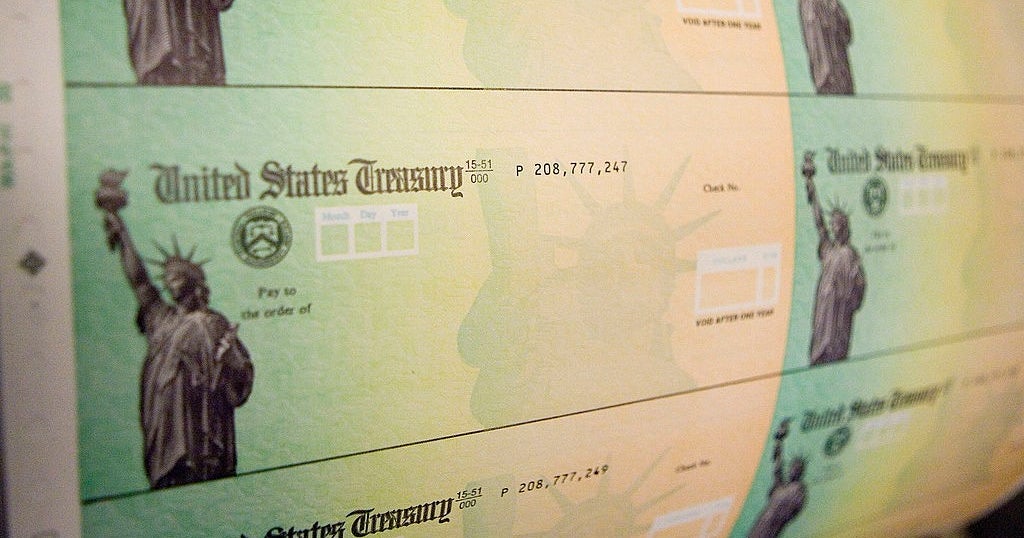What is universal basic income? Here are the basics
If elected, Democratic presidential candidate Andrew Yang will give every American $1,000 per month, no strings attached.
You read that correctly. It's part of the New York entrepreneur's big, broad plan to implement a so-called universal basic income -- a program he'll call the "Freedom Dividend" -- that makes regular cash payments to every American citizen over the age of 18, regardless of one's job status or income level.
"Yes, that means you and everyone you know would get another $1,000/month every month from the U.S. government, no questions asked," Yang's campaign website reads.
Yang is not the first to pitch the idea of universal basic income, or UBI. It's been tested everywhere from Scandinavia to Stockton, Calif. But more Americans are curious about the concept after Yang, who has made it the hallmark of his longshot campaign, memorably pitched it to the voting public during the second Democratic debate Wednesday.
Here are some of the basics of universal basic income.
What is a "universal basic income"?
The concept of a universal basic income, stretching back to the America Revolution era, is that every citizen in a given society receives a certain amount of money to spend on whatever they want, whenever they want. Of course they can also save or invest the money, depending on what their immediate needs or long term goals are. It is designed to fight poverty by putting cash directly in the hands of those who need it the most.
Thomas Paine's "National Fund," out of which every citizen 21 years and older would've receive 15 pounds sterling, is one of the earliest proposals for a universal basic income.
"It's a very old idea, it goes back even before the founding of the country. It's an idea where every citizen of a society gets a certain amount of money or resources free and clear to do whatever you want to meet you basic needs, regardless of your income," Yang told CBSN.
What are the potential benefits of a UBI?
A universal basic income in the United States would create millions of jobs and help Americans weather an unprecedented economic transition as technology and the rise of artificial intelligence automates and transforms the labor force, Yang has argued.
Half of all work activities -- including food service, manufacturing, retail and transportation jobs -- are expected to be automated by 2055 or sooner, according to a 2017 report from the consulting firm McKinsey & Co.
"Putting money into people's hands, it's good for business, it's good for the economy, and it's good for markets," Yang told CBSN. "If you think about where Americans are going to spend that money, they are going to spend it at their local businesses, their Main Street economy, and this is a great way to help supercharge those businesses for the next number of years."
Studies also show that a UBI can lead to improved health outcomes in children, as well boost residents' health and well-being.
In a test of the measure in Finland, recipients of a basic income were found to have a greater ability to concentrate than members of a control group.
"They were also more confident in their future and in their ability to influence societal issues," said Minna Ylikanno, lead researcher at Kela, a Finnish social services agency.
What are the possible downsides?
Critics of the regular stipend argue that it's financially irresponsible and discourages work and investment. Some research also shows that it's expensive to fund compared to existing social welfare programs and leaves low-income families even worse off.
Economists Hilary W. Hoynes and Jesse Rothstein estimate that a $12,000 annual payment to every American adult over the age of 18 would cost about $3 trillion per year -- about 75% of current total federal expenditures.
"Thus, implementing this UBI without cuts to other programs would require nearly doubling federal tax revenue," they conclude.
How would the U.S. pay for a UBI?
Yang's proposal would be funded by a 10% value-added tax, or VAT, on the production of goods and services that would generate $800 billion in annual revenue.
A UBI at the level Yang proposes would expand the U.S. economy by roughly 13% -- or $2.5 trillion by 2025 -- and would increase the labor force by around 4.6 million people, according to the Roosevelt Institute.
Where has a UBI been tried?
Alaska has for 37 years paid its residents a dividend out of its petroleum fund. In 2018, every qualified Alaskan received a $1,600 dividend, equaling a total disbursement of just over $1 billion, according to the Alaska Oil and Gas Association.
"What they are doing in Alaska with oil money we can do for the rest of the country with technology money," Yang told CBSN.
He's put his proposal to the test -- albeit on a far from universal scale. The businessman is giving New Hampshire resident Chuck Fassi $1,000 a month for one year to demonstrate how a UBI would work. Fassi, who is married and has a college-aged daughter, said he is spending the stipend on basic needs like food, and to help pay his daughter's tuition bills so that she graduates debt-free from college.
The city of Stockton, California, this year began testing a pilot program that distributes $500 a month to approximately 100 residents -- making it the country's first government-led experiment with free money.
Stockton resident Tomas Vargas Jr. said the stipend helps him afford groceries, electricity bills, and his kids' tuition and tutoring fees. He is also investing some of the cash cushion to prepare for a future without free money. "It gives me an opportunity to sit there and make sure I have a monthly dividend after it ends," he said.
Full results of Finland's universal basic income trial are due in 2020, but preliminary results show that it did not lead to gains in employment. It did, however, improve beneficiaries' health and well being.



